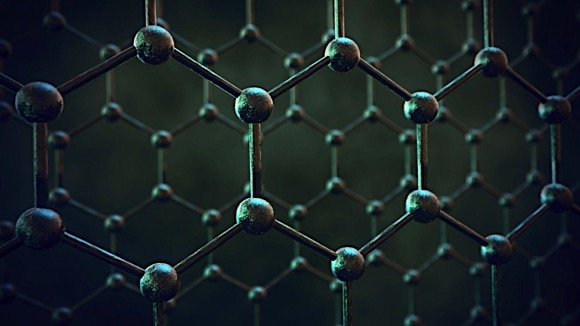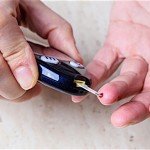An international team of researchers led by Columbia University has developed a technique for manipulating the electrical conductivity of graphene through compression. This discovery marks a significant step toward graphene’s viability as a semiconductor. The study, funded by the National Science Foundation and the David and Lucille Packard Foundation, was published in Nature.
Graphene is the strongest, thinnest material known to exist, and its unusual properties have intrigued the scientific community for over a decade. Although it is an excellent conductor of electricity, turning off the transmission of electrons through the material without altering its qualities have proven difficult.

“Graphene is the best electrical conductor that we know of on Earth,” said the study’s lead author Matthew Yankowitz, a postdoctoral research scientist in Columbia’s physics department. “The problem is that it’s too good at conducting electricity, and we don’t know how to stop it effectively. Our work establishes for the first time a route to realizing a technologically relevant band gap in graphene without compromising its quality. Additionally, if applied to other interesting combinations of 2-D materials, the technique we used may lead to new emergent phenomena, such as magnetism, superconductivity, and more.”
According to Cory Dean, Columbia University’s Assistant Professor of Physics and principal investigator for the study, a primary goal for graphene research is “to figure out a way to keep all good things about graphene but also create a band gap – an electrical on-off switch.” Dean explained that efforts to modify graphene in this way have thus far degraded the intrinsically good properties, reducing its usefulness.
However, when graphene is enclosed between layers of boron nitride (BN) and the materials are rotationally aligned, the BN modifies the electronic structure and creates a band gap that allows the material to behave as a semiconductor. The band gap created by this method alone is not large enough for use in operating electrical transistor devices at room temperature, but it is a start.
Yankowitz, Dean, and their colleagues then compressed the layers of the BN-graphene structure to enhance the band gap. The team found that applying pressure significantly increased the size of the band gap and blocked the flow of electricity through the graphene.

“As we squeeze and apply pressure, the band gap grows,” said Yankowitz. “It’s still not a big enough gap – a strong enough switch – to be used in transistor devices at room temperature, but we have gained a fundamentally better understanding of why this band gap exists in the first place, how it can be tuned, and how we may target it in the future. Transistors are ubiquitous in our modern electronic devices, so if we can find a way to use graphene as a transistor, it would have widespread applications.”
“Any emergent property that results from the combination of 2-D materials should grow stronger as the materials are compressed,” he added. “We can take any of these arbitrary structures now and squeeze them, and the strength of the resulting effect is tunable. We’ve added a new experimental tool to the toolbox we use to manipulate 2-D materials, and that tool opens boundless possibilities for creating devices with designer properties.”


































